© 2014-


Principality of Sealand
After the ‘Battle of Roughs Tower’ with Radio Caroline in June 1967, Roy Bates established physical control of Roughs Tower (ostensibly to establish an offshore radio station to replace his Radio Essex/BBMS station which had been prosecuted and closed in December 1966), and set about creating his own sovereign territory on the Fort.
He declared it to be the independent Principality of Sealand on 20th September 1967, w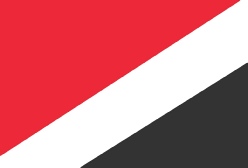 ith himself as ‘Prince’ Roy and his wife as ‘Princess ‘Joan. A red, white and black flag was raised on the Fort to demonstrate its independent status and the new state soon issued its own passports, currency an
ith himself as ‘Prince’ Roy and his wife as ‘Princess ‘Joan. A red, white and black flag was raised on the Fort to demonstrate its independent status and the new state soon issued its own passports, currency an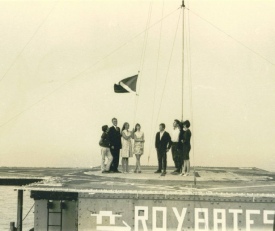 d postage stamps.
d postage stamps.
Unfortunately for Roy Bates few of these initiatives were recognised by the international community, although the Belgian Post Office is reported to have delivered letters bearing the Sealand stamps and France and Spain accepted Sealand passports as proof of identity. The coinage only remained legal tender on the Principality itself although it was of interest to collectors, as were the postage stamps.
The British Government refused to accept Sealand as an independent state because it did not fulfil the conditions required for statehood under international law. However, Dr. Pela Vitanyi, a professor of international law at Nijmegen University in Holland advised Roy Bates that he had effectively taken control of territory without a master and because the British authorities had not acted against him, they had effectively accepted his claim to the Fort.
Roy Bate's claim to sovereignty seemed to be reinforced by a British court in 1968 when his son, Michael, was charged with illegal possession of firearms and firing shots at Trinity House personnel. The Court ruled that it could not hear the case because Roughs Tower (Sealand) lay outside the then British territorial limits. A further boost to the independent status of Sealand came in May 1979 when the Archbishop of Canterbury gave permission for a wedding to be conducted on the Fort. Gordon Wilkinson, Sealand's Security Chief, married Karen Huxtable in a ceremony conducted by the vicar of Harwich, Rev. Jim Chelton.
EXPANSION PLANS
Early in 1978 plans were announced in (then) West Germany for the expansion of Sealand including the construction of a complex of duty free shops, restaurants, hotel, entertainment centre and a radio station. Sealand Holdings Ltd. established an office in Berlin at Kurfurstendamm 90, D-
A document issued through this office to prospective investors explained:
"Location Sealand is situated in the southern part of the North Sea, latitude 51.53 North, 01.28 East.
History Sealand was founded as a Sovereign Principality in 1967 in what had been international waters.
Constitution The Principality of Sealand is a sovereign state. The Senate will decide every issue by free vote. Sealand is pledged to recognise the right of all men to speak their mind freely and to respect the rights, beliefs and liberties of all men. Sealand is pledged to further the communication, understanding and tolerance between men of all nations, races and religions.
Legal System The law of Sealand is based on the British Common Law and the British Law of contract.
Passports and Citizenship The Sealand passport is black with a silver insignia on the face. Corps Diplomatique passports are the same except for being clearly marked as such on the face and above the insignia. The standard passport is valid for five years.
Flag The Sealand flag is red, white and black.
National Emblem The Sealand national emblem is the sea.
Language The official language of Sealand is English."
Roy Bates planned to build phase one of the expansion project in West Germany and float it across the North Sea to Sealand where it would be attached to the existing fort structure. He claimed to have secured £20 million worth of backing for this first phase, mostly from industrialists in West Germany. Bates was certain that the British Government were powerless to prevent the development going ahead because, although still maintaining that Roughs Tower was in the ownership of the Crown, they had accepted that the structure was outside British territorial waters. As is often the case with Sealand, however, nothing more was heard of these ambitious expansion plans for some months.
SEALAND INVASION
On 8th August 1978, Alexander Achenbach, who described himself as the Prime Minister of Sealand, hired several German and Dutch mercenaries to attack Sealand while ‘Prince’ Roy Bates and his wife were in Europe. Their son, 'Prince' Michael, who was alone on Sealand, was overpowered, tied up without food and water for four days and then sent to Holland. He made his own way back to Britain to rejoin his parents in Essex where the re-
Roy Bates mounted a dramatic helicopter raid on 16th August 1978 to retake the Fort and the 'invaders' surrendered after fierce hand to hand fighting. They were then held hostage by Bates and his family and made to clear up the damage caused to the Fort. An Essex Police spokesman was quoted in the local press as saying "Roughs Tower is in international waters and we have no plans to take any action or become involved at all."
By the end of August 1978 the tw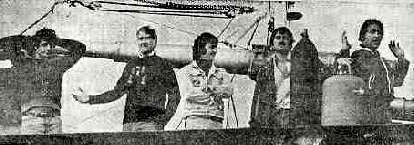 o Dutchmen had been released by Roy Bates and returned to Holland, but the third 'invader', German lawyer Gernot Puetz, who held a Sealand passport, was still detained on a charge of treason. A diplomat from the West German Embassy in London, Dr. Christoph Niemoller, Head of Legal and Consular Affairs, subsequently visited Sealand to try and negotiate Puetz's release.
o Dutchmen had been released by Roy Bates and returned to Holland, but the third 'invader', German lawyer Gernot Puetz, who held a Sealand passport, was still detained on a charge of treason. A diplomat from the West German Embassy in London, Dr. Christoph Niemoller, Head of Legal and Consular Affairs, subsequently visited Sealand to try and negotiate Puetz's release.
Roy Bates had imposed a £20,000 fine on Puetz, but his wife in Dusseldorf could not raise the money and was quoted in The Times on 6th September 1978 as saying that she was afraid to visit her husband on the Fort for fear of her own personal safety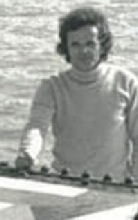 .
.
Puetz's explanation for the 'invasion' was that other former business associates of Bates -
Although Bates insisted Puetz would not be released until the £20,000 fine had been paid he later relented and on 28th September 1978 the German was finally set free. Roy Bates's wife 'Princess' Joan said; "I think he has been there long enough as a punishment. He was misguided and he now realises what he did was wrong. He's very sorry." Satisfied that Gernot Puetz had unwittingly become involved in the conspiracy Bates appointed him Sealand's Consul in Dusseldorf and paid for his journey home. However, Roy Bates was adamant that although the German had been released the £20,000 fine had not been waived -
Following his repatriation, Puetz and Alexander Achenbach established a ‘government in exile’ -
MISUSE OF SEALAND DOCUMENTATION
In 1997, the Bates family revoked all Sealand passports, including those that they themselves had issued over the previous 22 year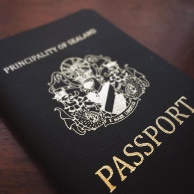 s. There were thought to have been about 150,000 in circulation. This was due to the realisation that an international money laundering ring had appeared, using the sale of fake Sealand passports to finance drug trafficking and money laundering from Russia and Iraq. The ringleaders of the operation, based in Madrid but with ties to various groups in Germany (including the rebel Sealand Government in exile established by Achenbach after the attempted 1978 coup), had used fake Sealand diplomatic immunity and license plates. They were even reported to have sold 4,000 fake Sealand passports to Hong Kong citizens for an estimated $1,000 each.
s. There were thought to have been about 150,000 in circulation. This was due to the realisation that an international money laundering ring had appeared, using the sale of fake Sealand passports to finance drug trafficking and money laundering from Russia and Iraq. The ringleaders of the operation, based in Madrid but with ties to various groups in Germany (including the rebel Sealand Government in exile established by Achenbach after the attempted 1978 coup), had used fake Sealand diplomatic immunity and license plates. They were even reported to have sold 4,000 fake Sealand passports to Hong Kong citizens for an estimated $1,000 each.

- Click on this logo to visit the Sealand website

Sea Structures

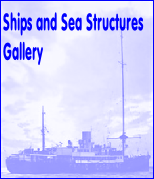



Floor 2
Back to







Sealand flag
The Bates family raise the flag above the newly declared nation of Sealand, September 1967
Roy Bates (second left) with the invaders after recapturing Sealand, August 1978
Gernot Puetz
Back to Roughs Tower
